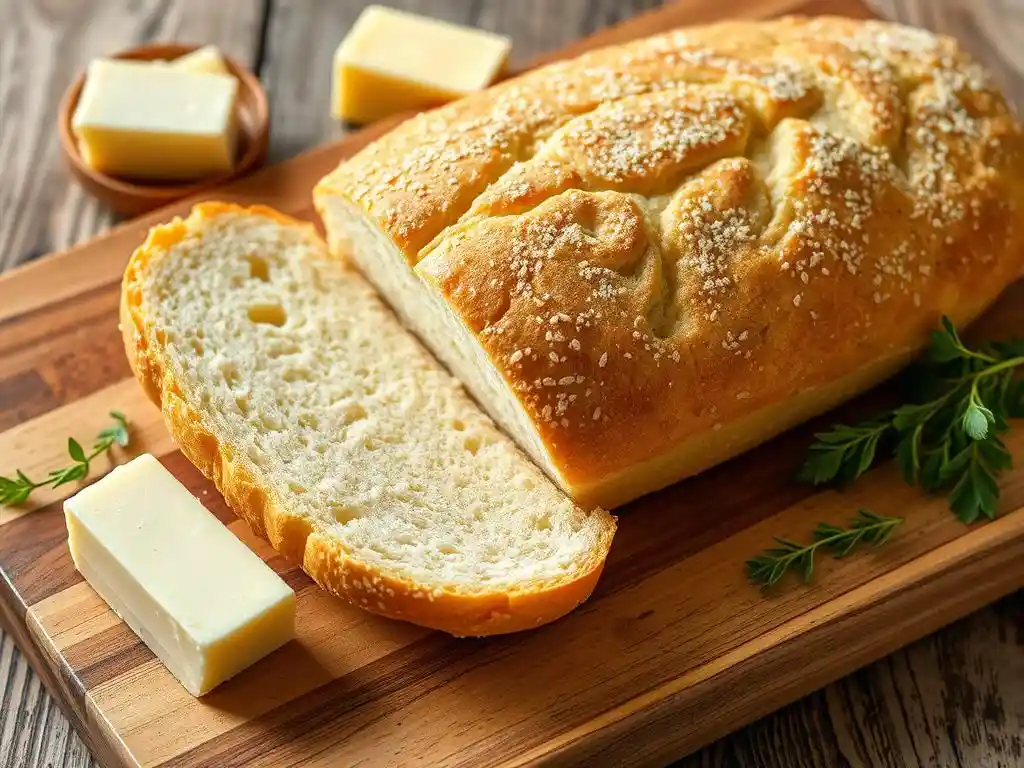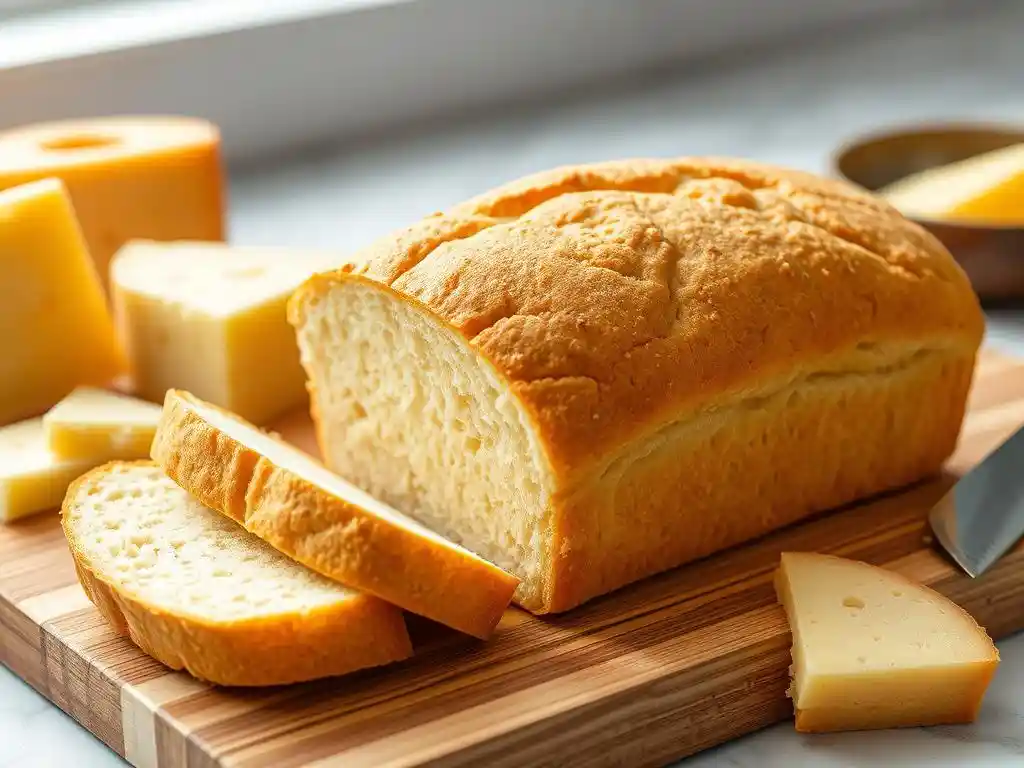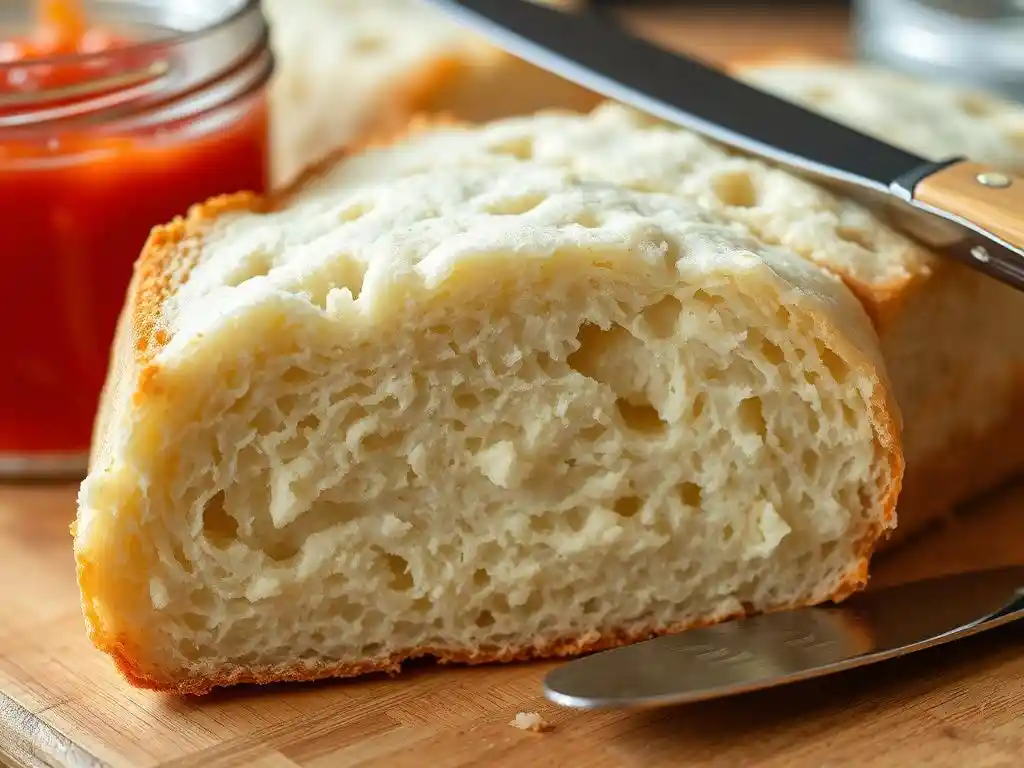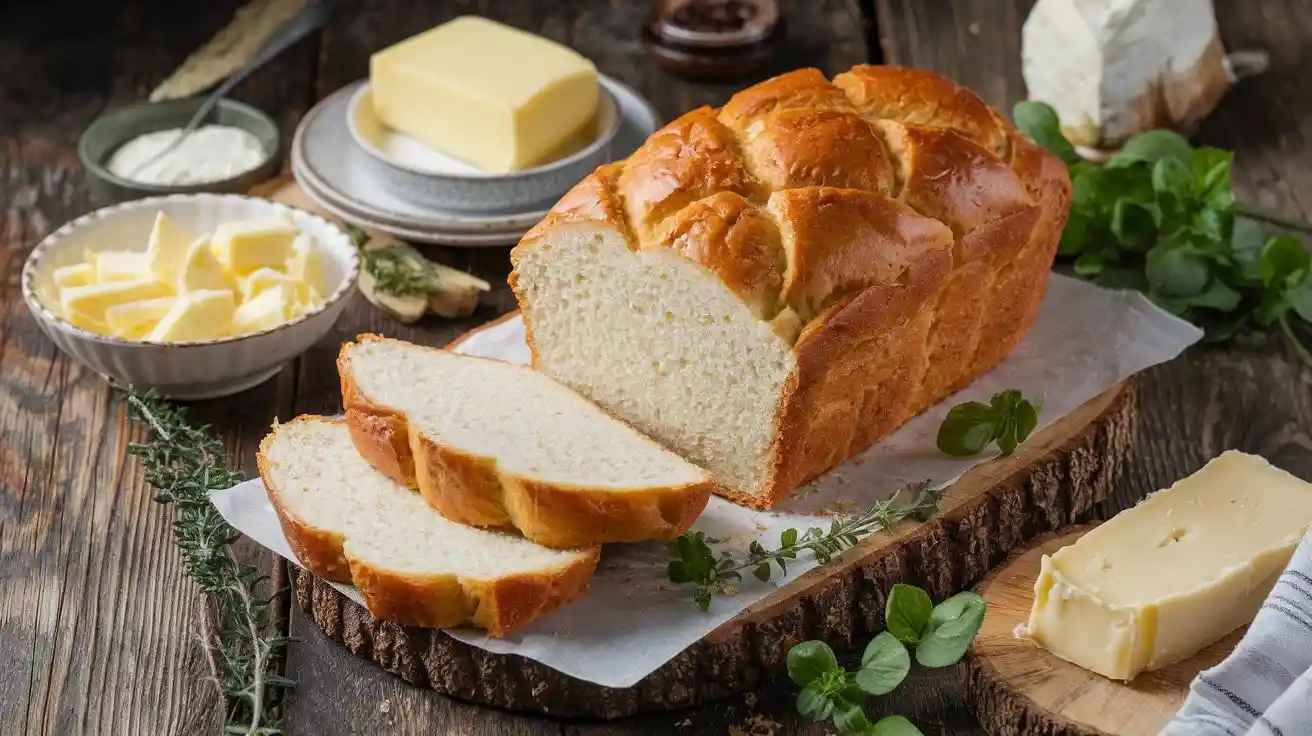Cottage Cheese Bread is the perfect fusion of delicious flavor and a health boost. If you’re looking to add more protein and a subtle tang to your homemade bread, this recipe is for you. Cottage cheese, a versatile ingredient packed with nutrients, transforms a simple loaf into something unique, soft, and tender. Whether you’re baking for a nutritious breakfast or serving it as a side dish for your dinner, this Cottage Cheese Bread recipe will not disappoint.
In this blog post, I’ll guide you through the process of making your own loaf of cottage cheese bread, providing step-by-step instructions, tips, and troubleshooting advice along the way. I’ll also dive into the nutritional benefits of cottage cheese, a key ingredient that makes this bread stand out from the crowd. You’ll discover how easy it is to make, and by the end of this post, you’ll have all the confidence needed to bake your perfect loaf!
Table of Contents
- Introduction
- Why Cottage Cheese in Bread?
- Ingredients for Cottage Cheese Bread
- Step-by-Step Guide to Baking Cottage Cheese Bread
- The Science of Using Cottage Cheese in Bread
- Baking Tips and Techniques
- Variations and Add-Ins
- Storing and Serving Suggestions
- FAQs: Troubleshooting and Baking Tips
- Conclusion

Introduction
When it comes to homemade bread, there’s nothing more satisfying than combining unique ingredients that enhance both the flavor and nutritional value. Cottage cheese is one such ingredient that brings a rich, creamy texture and a subtle tang to your bread while boosting its protein content. This Cottage Cheese Bread recipe is not only delicious but also an excellent way to incorporate more nutrients into your diet.
Whether you’re a seasoned baker or just starting, this recipe is beginner-friendly, packed with tips for success, and easy to customize with your favorite herbs or seeds. If you’ve enjoyed making sourdough sandwich bread or chocolate chunk banana bread, this cottage cheese bread will become a new favorite in your baking repertoire.
Why Cottage Cheese in Bread?
Cottage cheese may not be the first thing that comes to mind when thinking about bread, but it’s actually a fantastic addition. Here’s why:
- Moisture and Texture: Cottage cheese keeps the bread moist and gives it a tender crumb. The creamy curds melt into the dough, ensuring that the loaf remains soft, even days after baking.
- Protein Boost: Cottage cheese is rich in protein and calcium, making this bread more nutritious than your average loaf. For a deeper dive into the health benefits of cottage cheese, check out this article.
- Subtle Tangy Flavor: The mild tang from the cottage cheese adds a unique flavor to the bread, balancing the sweetness if you decide to add honey or other sweeteners.
With these benefits, you’ll not only enjoy a delicious loaf but also feel good about eating it!
Ingredients for Cottage Cheese Bread
To make this simple yet flavorful Cottage Cheese Bread, gather the following ingredients:
- 2 1/4 cups all-purpose flour
- 1/2 cup whole wheat flour (optional, for a heartier loaf)
- 1 cup cottage cheese (full-fat or low-fat, depending on preference)
- 1 tablespoon sugar (or honey for a sweeter loaf)
- 1 packet active dry yeast (or 2 1/4 teaspoons)
- 1/2 teaspoon salt
- 1/4 cup warm water (110°F)
- 2 tablespoons melted butter (or olive oil for a dairy-free option)
- 1 egg (optional, for extra richness)
- Optional add-ins: fresh herbs like rosemary, thyme, or seeds for added texture.
This recipe makes one standard-sized loaf. For a dairy-free version, you can replace the cottage cheese with a plant-based alternative.
Step-by-Step Guide to Baking Cottage Cheese Bread
- Prepare the yeast: In a small bowl, mix the warm water, sugar, and yeast. Let it sit for about 5 minutes until the yeast becomes frothy, indicating that it’s active.
- Combine wet ingredients: In a large mixing bowl, combine the cottage cheese, melted butter, and egg (if using). Stir until well incorporated.
- Add the dry ingredients: In a separate bowl, whisk together the all-purpose flour, whole wheat flour, and salt. Gradually add the dry mixture to the wet mixture, stirring with a wooden spoon or spatula until a dough forms.
- Knead the dough: Turn the dough onto a lightly floured surface and knead for 8–10 minutes until it becomes smooth and elastic. If the dough is too sticky, add more flour, a tablespoon at a time.
- First rise: Place the dough in a greased bowl, cover it with a damp cloth, and let it rise in a warm place for about 1 hour, or until it doubles in size.
- Shape the dough: Once risen, punch the dough down and shape it into a loaf. Transfer it to a greased 9×5-inch loaf pan.
- Second rise: Cover the loaf with a towel and let it rise again for 30–40 minutes until it puffs up.
- Bake: Preheat the oven to 375°F (190°C). Bake the loaf for 30–35 minutes, or until the top is golden brown and the bread sounds hollow when tapped.
- Cool: Allow the bread to cool in the pan for 10 minutes before transferring it to a wire rack to cool completely.
The Science of Using Cottage Cheese in Bread
Cottage cheese adds moisture and richness to bread dough. Its curds are made up of casein proteins, which trap moisture, keeping your loaf soft and tender for longer periods. During baking, the curds melt into the dough, creating a creamy texture without the need for additional fats.
Moreover, cottage cheese’s high-protein content helps support gluten development, making the dough more elastic and giving the bread a well-structured crumb. Curious about more health benefits? Take a look at this scientific article that explores the nutritional components of dairy, including cottage cheese.

Baking Tips and Techniques
- Use Full-Fat Cottage Cheese: For the best texture, opt for full-fat cottage cheese. The higher fat content helps create a tender, moist crumb.
- Check Your Yeast: Make sure your yeast is active by letting it proof in warm water with sugar. If it doesn’t foam up after 5–10 minutes, it may be expired.
- Don’t Overwork the Dough: Kneading is essential to developing gluten, but overworking the dough can make the bread dense. Knead just until the dough is smooth and elastic.
- Oven Temperature: Ensure your oven is properly calibrated to get the perfect bake. For more insights on oven temperatures, read this guide on oven temperature and baking techniques.
Variations and Add-Ins
This Cottage Cheese Bread recipe is versatile and can be customized to suit your taste preferences:
- Herbed Cottage Cheese Bread: Add fresh or dried herbs like rosemary, thyme, or chives for an aromatic loaf.
- Seeded Cottage Cheese Bread: Mix in sunflower seeds, flaxseeds, or poppy seeds for added crunch and texture.
- Sweet Cottage Cheese Bread: Replace the sugar with honey and mix in dried fruits like raisins or cranberries for a sweeter loaf.
Storing and Serving Suggestions
- Storage: Wrap the cooled bread in plastic wrap or store it in an airtight container. It will stay fresh for 3–4 days at room temperature. For longer storage, freeze the loaf or slices, and thaw as needed.
- Serving: This bread pairs perfectly with a spread of butter, jam, or cream cheese. Serve it as a side with soups or salads, or toast slices for breakfast.

FAQs: Troubleshooting and Baking Tips
Q: Can I use whole wheat flour exclusively in this recipe?
A: Yes, you can substitute all-purpose flour with whole wheat flour, but the texture may be denser. Adding an extra tablespoon of water can help lighten the dough.
Q: My dough didn’t rise much. What went wrong?
A: This could be due to inactive yeast or a dough that was too cold. Make sure your yeast is fresh, and let the dough rise in a warm, draft-free area.
Q: Can I make this recipe gluten-free?
A: Yes! You can replace the all-purpose flour with a gluten-free flour blend that contains xanthan gum to help mimic the structure of gluten.
Conclusion
This Cottage Cheese Bread recipe offers the perfect combination of flavor, texture, and nutritional benefits. By following the step-by-step instructions and tips in this guide, you’ll be able to bake a loaf that’s soft, tender, and filled with subtle tanginess. Whether you’re looking to boost your protein intake or simply try a new twist on traditional bread, this recipe has you covered. Serve it with your favorite dishes or enjoy it on its own—it’s versatile, delicious, and sure to become a family favorite!

